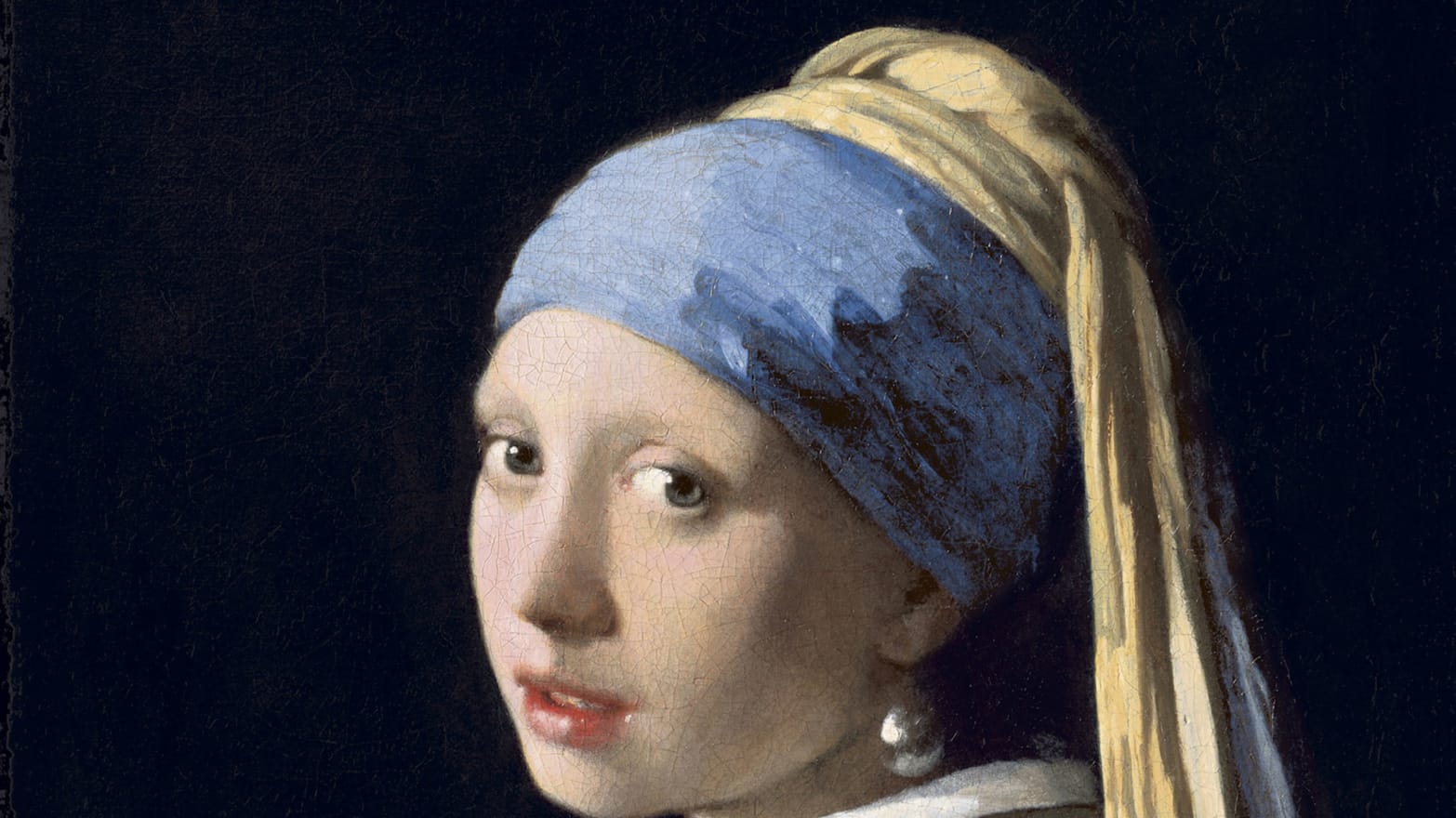The Yayoi Kusama exhibit isn’t the only show in New York that people are willing to wait in long, cold lines to experience. At the Frick Collection on the Upper East Side, droves of visitors are turning out daily to see, Vermeer, Rembrandt, and Hals: Masterpieces of Dutch Painting From the Mauritshuis.
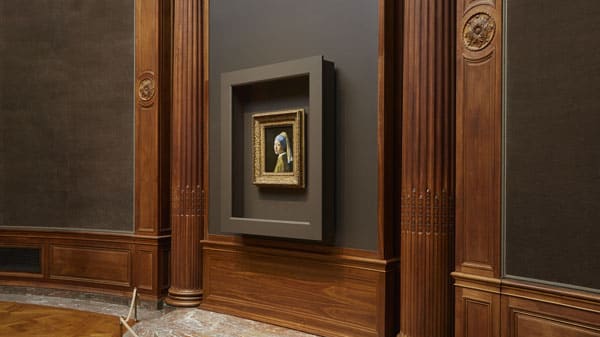
The collection, normally based at the Royal Picture Gallery Mauritshuis in The Hague, has been on a world tour while the prominent Dutch museum it calls home undergoes renovations. The Frick Collection is the final American stop for the exhibit, which includes fifteen works from the Dutch Golden Age, some of which have not travelled in decades.
Roughly occurring in the 17th century, the Dutch Golden Age saw a rapid expansion in the Netherland’s wealth and power, both domestically after the Thirty Year’s War and internationally with the growth of the Dutch East India Company. Much of the increased wealth was spent cultivating one of the most significant levels of art production in history. Despite the plethora of Dutch works from this period that fill museums worldwide, some experts believe that only one to ten percent of the total art produced during this time survives.
The exhibition, organized by Margaret Iacono, Assistant Curator at the Frick, contains famous works like Vermeer’s Girl with the Pearl Earring, Fabritius’s The Goldfinch, and Rembrandt’s Susanna, and offers a glimpse into the values of this ascendant nation. Yet while the historical Dutch values (still relevant today) of industry, order, and modesty are often seen in landscapes and genre paintings of domestic daily life, the portraiture and history paintings in this collection show a culture more in tune with its newfound status. By structuring the exhibition as an introduction to this cultural epoch, the collection gives visitors a deeper understanding of how Dutch culture interacted with art during the Dutch Golden Age rather than being simply a greatest hits album of the Dutch masters.
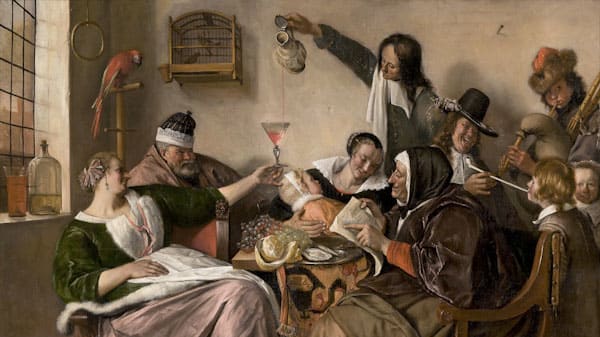
While the modern eye might see Jan Steen’s As the Old Sing, So Pipe the Young, and think the Dutch knew how to enjoy a good time, the painting is instead chastising the adults in the group for their lewd behavior at what is supposed to be a baptism, and is meant as a warning to young people. The exhibition’s audio guide (included in the price of admission) does an excellent job of illustrating for the untrained eye the various symbols in the paintings that, once deciphered, convey a lot more meaning. In Steen’s painting the symbols used to see the piece as a warning include oysters, a bagpipe, and foot warmer which connote debauchery and eroticism, and a parrot, which represents mimicry. Steen’s emphasis on moral turpitude can also be seen in the less-than-subtle Oyster Eater, which is intended to signify a woman who is not exactly virtuous.
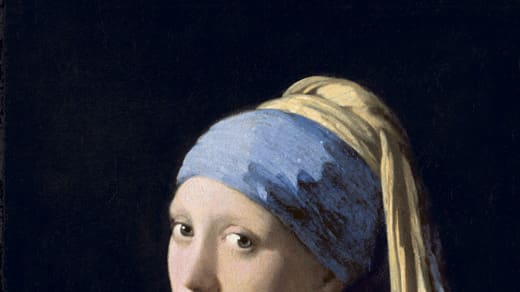
Then, of course, there is the famous painting that is probably drawing most people through the door (and the reason The Frick has extended Friday hours): Vermeer’s Girl with a Pearl Earring, which has not been shown in New York since 1984, is given the Mona Lisa treatment, the only painting that hangs in the Oval Room of the museum. The piece, popularized by Tracy Chevalier’s 1999 novel and subsequent film adaptation, is a type of Dutch portraiture known as tronie, which often portrays imagined exotics people or idealized faces. The “Sphinx of Delft,” as Vermeer was known, clothes the alluring female with exotic appurtenances like a turban and larger-than-life pearl drop earring.
The other big attractions include Carl Fabritius’s Goldfinch, which has long captivated audiences with its eerie, life-like quality. The bird, seen chained against a white backdrop, is a magnificent trompe l’oiel believed by some to have been placed inside a cage, which would provide a clever illusion. In addition, Rembrandt’s Portrait of an Elderly Man, painted in the artist’s famous “rough” style, and portraying a man at the end of his years in a way that captures his wisdom and insight about life, but also perhaps his slight disappointed with it. Jacob van Ruisdael’s View of Haarlem with Bleaching Grounds depicts the industry-clad landscape long associated with the Dutch Lowlands.
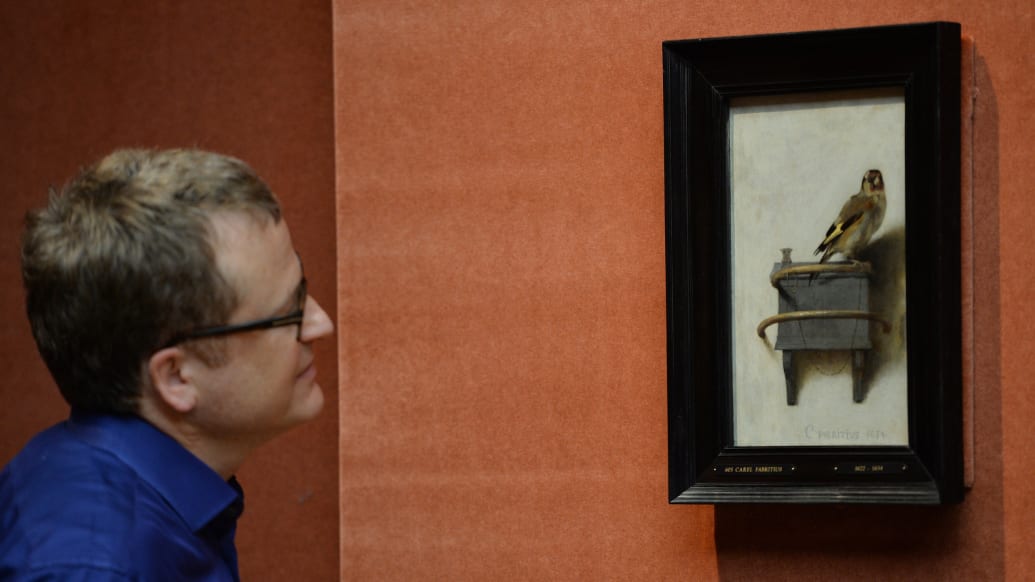
But the most exhilarating piece in the collection is arguably Rembrandt’s Susanna. Telling the story of Susanna, who was spied on by Babylonian elders as recounted in the book of Daniel, this historical painting represents Rembrandt’s mastery. The raw emotion of the painting’s subject is palpable, as Susanna clamors to cover herself, turning her tearful eyes to the viewer both in fear and a plea for help. Her form, while beautiful, is not idealized, and, in the renowned Dutch attention to detail, her legs still bear the marks made by her stockings.
The best thing about the exhibition, however, may be that it entices people to explore the rest of the Frick’s world-class collection housed in the beautiful mansion of the former industrial magnate. With the Dutch masters only occupying two rooms, the rest of the mansion is given over to the permanent collection, which is made up of some of the best pre-Modern European art. From Hans Holbein the Younger (whose Sir Thomas More is always more vivid in person) and El Greco to Thomas Gainsborough, Titian, and some fantastic medieval enamels tucked away in an alcove, the Frick itself always worth a stop.
Vermeer, Rembrandt, and Hals: Masterpieces of Dutch Painting From the Mauritshuis is on Display at the Frick Collection until January 19, 2014. Children under ten will not be admitted to the museum.

